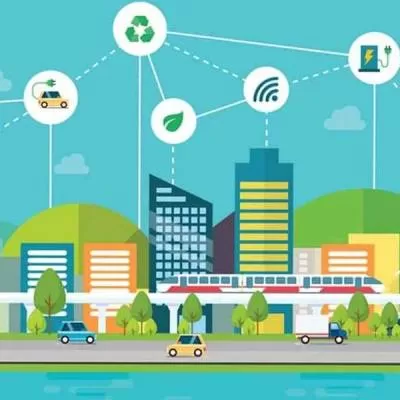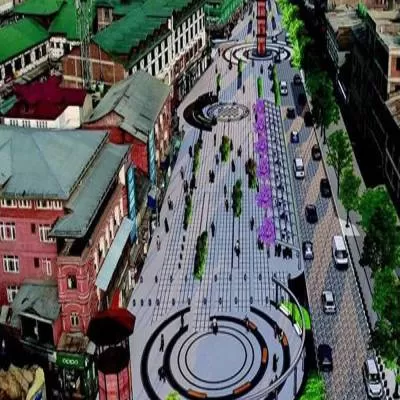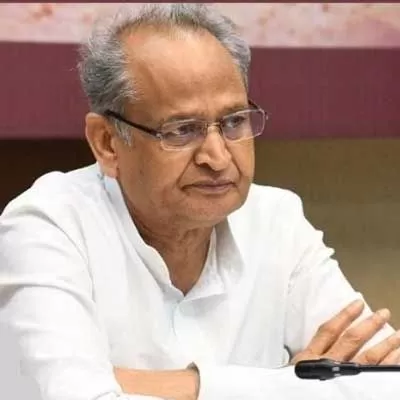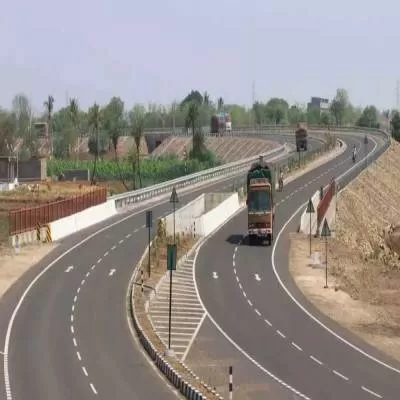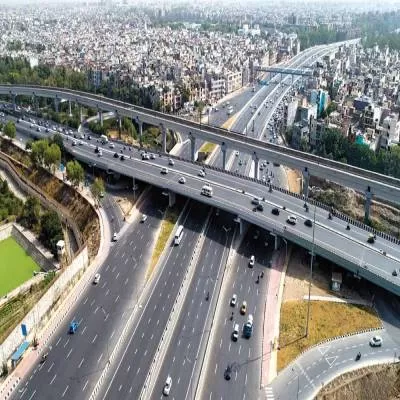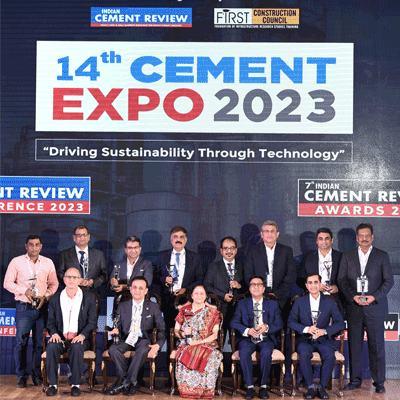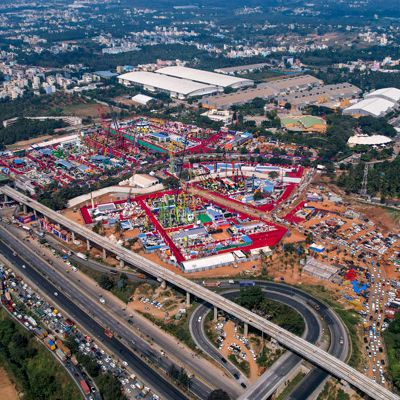- Home
- Infrastructure Transport
- ROADS & HIGHWAYS
- Booster Dose
Booster Dose
The Government of India has been coming out with a number of moves to revitalise the infrastructure sector, which was in the doldrums earlier.
The Centre has carried out a number of changes in the contract-awarding process. It has started identifying struck projects, and is trying to fast track them. Wherever DPRs are ready, the government has started awarding projects where the major portion of land acquisition has been completed. It has also started focusing only on EPC contracts, since most contractors and infrastructure companies had lost faith in the public-private partnership (PPP) and build-operate-transfer (BOT) models. Starting with a fuel cess for building up a dedicated infrastructure fund, the government also arranged funds from various other sources, to pump in fresh energy for project implementation.
Opportunities galore
Many new road contractors seized the above opportunities and have expanded their footprint in road projects. The road construction target has also been increased 2.5 times to 16,000 km for the fiscal, translating into building over 40 km of highways a day. The National Highways Authority of India (NHAI) has planned to add around 50,000 km of road network in the next five to six years, with an investment potential of nearly $250 billion (about Rs 17 lakh crore).
These developments have opened up the market for our batching plants for concrete road construction in India. With respect to the new road projects coming up in the country, the customer looks for equipment which is easy and fast to erect, and also to dismantle, assemble, and transport from one site to another. And the benefits cut across sectors - our self-loading mixers are playing a vital role in concrete road construction in many villages.
The government initiative in awarding coal mines is yet to see projects that require purchase of construction machinery. However, here again, the mood is positive for all stakeholders. The government has also revived some of the stuck hydropower, thermal and nuclear power projects.
The Centre is also pursuing construction of many new ports in the public and private sectors, which will further fuel the growth of construction equipment. The Sagarmala project, which was envisioned recently to increase the role of waterways in industrial development, thus decreasing logistics cost, has just started gaining traction. These projects include various infrastructure development opportunities in 12 major ports, projects in eight maritime states and other agencies, of which over 250 projects have been identified.
Also, 26 port-rail connectivity projects have been identified in the National Perspective Plan, April 2016, under Sagarmala, at a total estimated cost of Rs 29,500 crore. Metro projects are also doing fast progress across many cities like Lucknow, Nagpur, Noida, Mumbai, Navi Mumbai, and Chennai. There are more metro projects coming up in cities like Bhopal, Chandigarh, Indore, Kanpur, Meerut, Varanasi, Srinagar and Surat, among others. Monorail projects have been planned in New Delhi, Noida and Ranchi. Light rail projects are planned in cities like Indore, Kozhikode, and Bhopal.
A few glitches
However, despite the positive sentiment across various infrastructure domains, the real-estate market is yet to pick up unsold inventories in prime urban centres like the National Capital Region (NCR), Pune, Bengaluru, Hyderabad, Kolkata, Mumbai, and Chennai.
We hope the real estate sector will show signs of revival by 2017. The GST Bill, which recently received Presidential assent, will usher in far-reaching developments in this sector. But a few more critical steps have to be taken by the government before the final Act sees the light of day. We sincerely hope that all these milestones are crossed seamlessly, and GST comes into force by April 2017.
As construction manufacturers, we see that all these developments are contributing to increased equipment sales. We expect this trend to continue. By 2020, the overall industry will be doing very well. We can expect a CAGR of 15 per cent in sales of various models of construction equipment.
About the author:
VG Sakthikumar, Managing Director, Schwing Stetter Sales and Services, is also the Convener of Membership Panel of Indian Construction Equipment Manufacturers´ Association (ICEMA) and Chairman of Mechanization Committee of Builders´ Association of India (BAI).
The most important development that has taken place in the infrastructure domain is that all stakeholders now believe that a great future awaits the industry, says VG SAKTHIKUMAR. The Government of India has been coming out with a number of moves to revitalise the infrastructure sector, which was in the doldrums earlier. The Centre has carried out a number of changes in the contract-awarding process. It has started identifying struck projects, and is trying to fast track them. Wherever DPRs are ready, the government has started awarding projects where the major portion of land acquisition has been completed. It has also started focusing only on EPC contracts, since most contractors and infrastructure companies had lost faith in the public-private partnership (PPP) and build-operate-transfer (BOT) models. Starting with a fuel cess for building up a dedicated infrastructure fund, the government also arranged funds from various other sources, to pump in fresh energy for project implementation. Opportunities galore Many new road contractors seized the above opportunities and have expanded their footprint in road projects. The road construction target has also been increased 2.5 times to 16,000 km for the fiscal, translating into building over 40 km of highways a day. The National Highways Authority of India (NHAI) has planned to add around 50,000 km of road network in the next five to six years, with an investment potential of nearly $250 billion (about Rs 17 lakh crore). These developments have opened up the market for our batching plants for concrete road construction in India. With respect to the new road projects coming up in the country, the customer looks for equipment which is easy and fast to erect, and also to dismantle, assemble, and transport from one site to another. And the benefits cut across sectors - our self-loading mixers are playing a vital role in concrete road construction in many villages. The government initiative in awarding coal mines is yet to see projects that require purchase of construction machinery. However, here again, the mood is positive for all stakeholders. The government has also revived some of the stuck hydropower, thermal and nuclear power projects. The Centre is also pursuing construction of many new ports in the public and private sectors, which will further fuel the growth of construction equipment. The Sagarmala project, which was envisioned recently to increase the role of waterways in industrial development, thus decreasing logistics cost, has just started gaining traction. These projects include various infrastructure development opportunities in 12 major ports, projects in eight maritime states and other agencies, of which over 250 projects have been identified. Also, 26 port-rail connectivity projects have been identified in the National Perspective Plan, April 2016, under Sagarmala, at a total estimated cost of Rs 29,500 crore. Metro projects are also doing fast progress across many cities like Lucknow, Nagpur, Noida, Mumbai, Navi Mumbai, and Chennai. There are more metro projects coming up in cities like Bhopal, Chandigarh, Indore, Kanpur, Meerut, Varanasi, Srinagar and Surat, among others. Monorail projects have been planned in New Delhi, Noida and Ranchi. Light rail projects are planned in cities like Indore, Kozhikode, and Bhopal. A few glitches However, despite the positive sentiment across various infrastructure domains, the real-estate market is yet to pick up unsold inventories in prime urban centres like the National Capital Region (NCR), Pune, Bengaluru, Hyderabad, Kolkata, Mumbai, and Chennai. We hope the real estate sector will show signs of revival by 2017. The GST Bill, which recently received Presidential assent, will usher in far-reaching developments in this sector. But a few more critical steps have to be taken by the government before the final Act sees the light of day. We sincerely hope that all these milestones are crossed seamlessly, and GST comes into force by April 2017. As construction manufacturers, we see that all these developments are contributing to increased equipment sales. We expect this trend to continue. By 2020, the overall industry will be doing very well. We can expect a CAGR of 15 per cent in sales of various models of construction equipment. About the author: VG Sakthikumar, Managing Director, Schwing Stetter Sales and Services, is also the Convener of Membership Panel of Indian Construction Equipment Manufacturers´ Association (ICEMA) and Chairman of Mechanization Committee of Builders´ Association of India (BAI).


